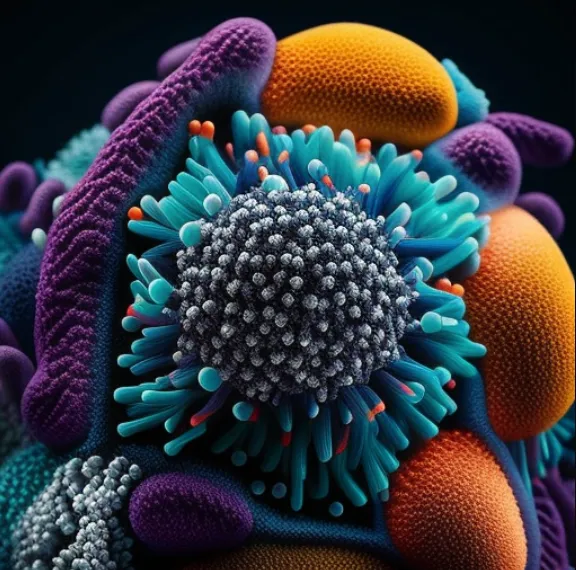Protect the Environment by Understanding the Pollution of Microfibers in Fashion
Back News

We are all becoming increasingly aware of the impact our clothing has on the environment. From the water and pesticides used to grow cotton to the dyes, high energy used in producing polyester, and chemicals used in manufacturing to the carbon footprint of shipping garments worldwide, our clothes come at a high environmental cost. But what about the invisible impacts of our clothes? The microfibers they shed with each wear and wash? These tiny plastic threads are making their way into our waterways and food supply; we don’t even know it.
What are microfibers, and where do they come from?
Microfibers are tiny plastic particles from synthetic textiles like polyester and acrylic, which find their way into waterways and the environment. They exist primarily unnoticed, representing a new danger to humans and animals. When released through washing, these tiny pieces of plastics disintegrate even smaller, entering water systems in the form of microbeads that pollute waterways, kill microplanktons (oxygen-producing organisms known as lungs of oceans), build up in animals, and can pass through our bodies. Studies in recent years have linked microfiber pollution to Alzheimer’s disease and other illnesses. We must work together to reduce our dependence on synthetic materials and find a way to wash them correctly or stop using them altogether. Otherwise, our future is being decided not by us but by the unchecked spread of microfibers — something we may never be able to reverse!
How do microfibers end up in our oceans and waterways?
It’s hard to believe that our mundane lifestyle choices adversely affect the world’s ocean and freshwater ecosystems, but it’s true. Microfibers are an incredibly vivid example of this; they originate from synthetic clothing materials, such as polyester and acrylic fabrics, that release tiny, near-microscopic threads into the wastewater together with other washing residues. These tiny fibers eventually make their way into coastal and seafloor waters, forming a significant part of our global ecosystem. We may not be able to see them in every instance. Still, their incredible impact persists as these fibers act like magnets to pollutants in oceans or rivers, binding environmental toxins such as heavy metals to their surfaces before entering the food chain. We can no longer turn away from this problem; we must begin working towards better solutions.
The impacts of microfibers on marine life and the environment
Microfibers are not only a lesser-known threat to marine life, but they are becoming an ever-growing hazard in our environment. Microfibers, relatively tiny pieces (less than 5mm) of plastic pollution, come from synthetic clothing materials like polyester and nylon that degrade over time and leak into river systems, lakes, or the ocean. This fiber influx impacts some of the most vulnerable species on Earth — aquatic life. Not only can these fibers be mistaken for food, leading animals to consume them, but the microfibers accumulate toxins from other environmental pollutants and ultimately cause death. Studies suggest that anywhere from 34% to 80% of marine debris originates from land-based activities, making it clear that we must rid our environment of this dangerous pollution.
What can you do to reduce your use of microfibers?
If we’re going to reduce microfiber consumption, it’s time to invest in better clothing and laundry habits. Every piece of synthetic clothing causes unnecessary damage to our environment, so why not take steps to limit the amount we use? Make sure your clothes are made of natural materials and launder them carefully to prevent fibers from breaking into the water. When washing these clothes, use a laundry bag specially designed for delicate so that microfibers don’t escape into the drain. Finally, even when these measures have been taken, responsibly disposing worn-out clothes is essential. Don’t be afraid to make the switch — let’s make a difference together by reducing our consumption of microfibers!
Alternatives to conventional fabrics that don’t rely on microfibers
With the rise of environmentally conscious fashion and people wanting to do away with fast fashion, alternatives to conventional fabrics are proliferating. Fortunately, sustainable textiles from natural resources like bamboo and hemp and natural fibers grown by fermentation or molecular farming are gaining more attention as viable alternatives — and they don’t rely on microfibers! These textiles have unique properties that make them perfect for clothing — they’re soft, lightweight, breathable, durable, absorbent, and anti-bacterial. So, if you want to reduce your carbon footprint and energy usage and improve water quality while still rocking the latest trends, why not try out some of these sustainably sourced fabrics? Giving us stylish yet sustainable fashion choices and peace of mind.
Microfibers are an invisible pollutant that is devastatingly impacting our oceans and marine life. By understanding where they come from and how they end up in our waterways, we can start taking steps to reduce our use. Many alternatives to conventional fabrics don’t rely on microfibers, so there’s no excuse not to make the switch. Let’s work together to protect our oceans and the creatures who call them home.